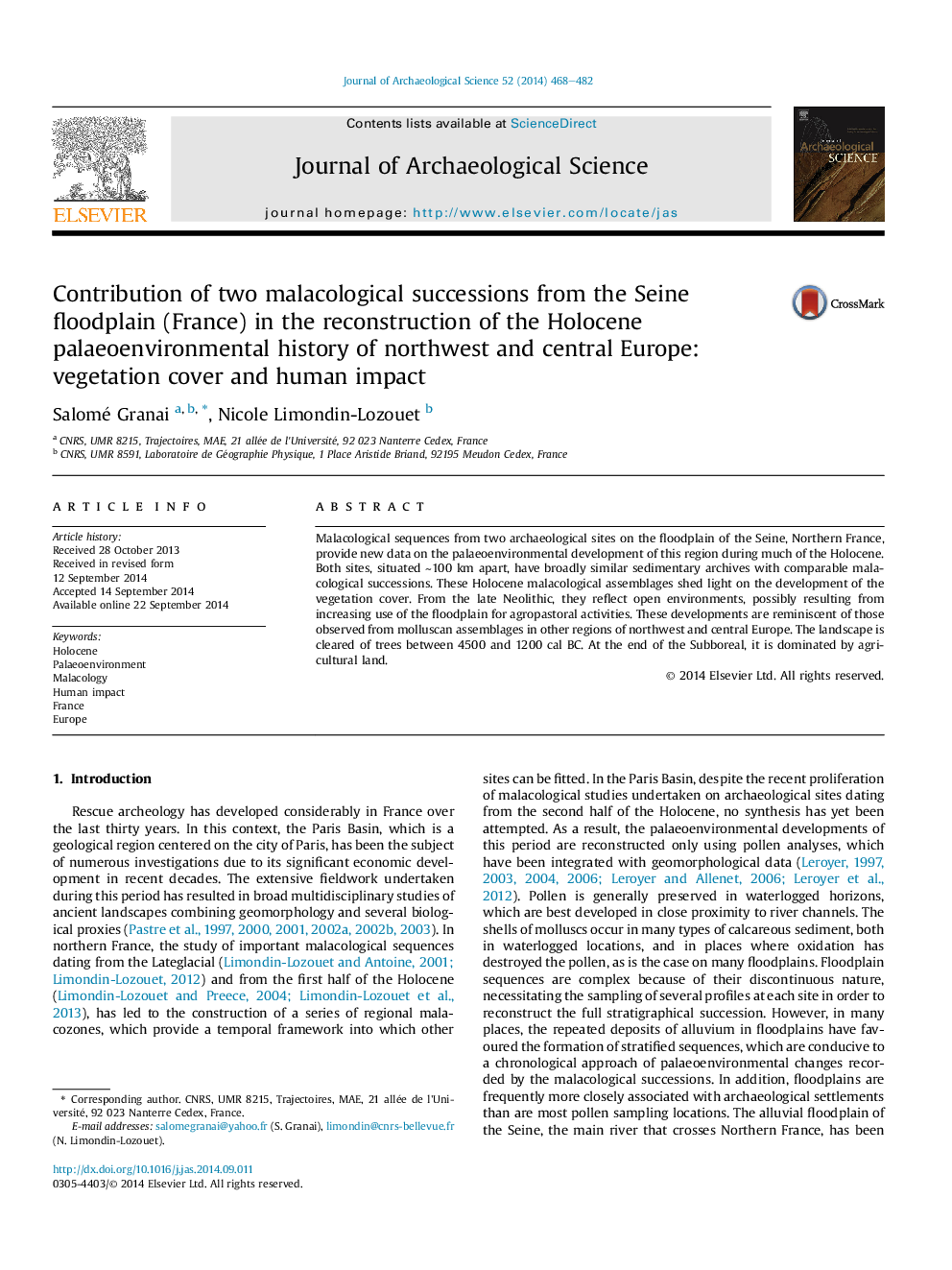| Article ID | Journal | Published Year | Pages | File Type |
|---|---|---|---|---|
| 7442803 | Journal of Archaeological Science | 2014 | 15 Pages |
Abstract
Malacological sequences from two archaeological sites on the floodplain of the Seine, Northern France, provide new data on the palaeoenvironmental development of this region during much of the Holocene. Both sites, situated â¼100 km apart, have broadly similar sedimentary archives with comparable malacological successions. These Holocene malacological assemblages shed light on the development of the vegetation cover. From the late Neolithic, they reflect open environments, possibly resulting from increasing use of the floodplain for agropastoral activities. These developments are reminiscent of those observed from molluscan assemblages in other regions of northwest and central Europe. The landscape is cleared of trees between 4500 and 1200 cal BC. At the end of the Subboreal, it is dominated by agricultural land.
Related Topics
Physical Sciences and Engineering
Materials Science
Materials Science (General)
Authors
Salomé Granai, Nicole Limondin-Lozouet,
